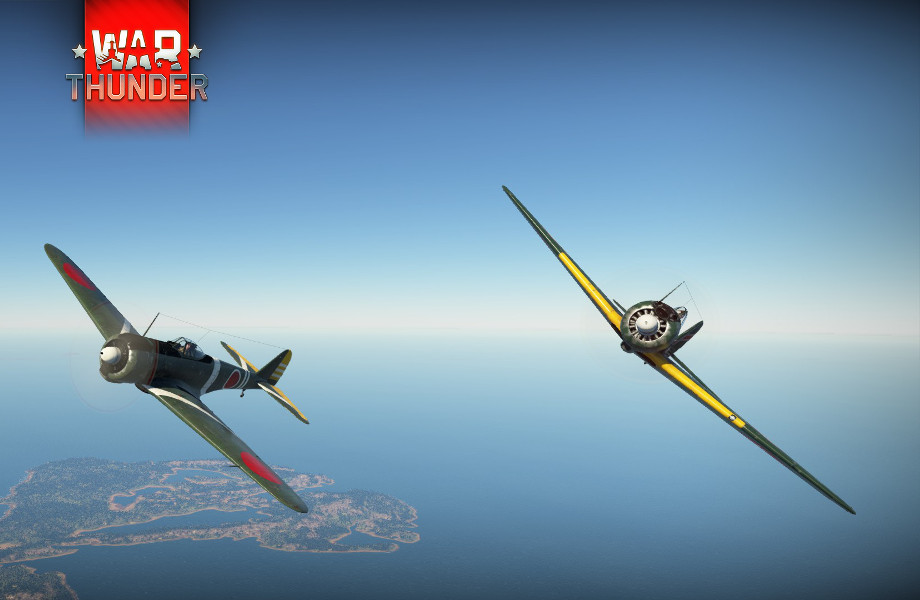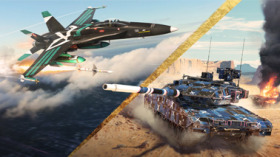
- For PC
- For MAC
- For Linux
- OS: Windows 10 (64 bit)
- Processor: Dual-Core 2.2 GHz
- Memory: 4GB
- Video Card: DirectX 11 level video card: AMD Radeon 77XX / NVIDIA GeForce GTX 660. The minimum supported resolution for the game is 720p.
- Network: Broadband Internet connection
- Hard Drive: 22.1 GB (Minimal client)
- OS: Windows 10/11 (64 bit)
- Processor: Intel Core i5 or Ryzen 5 3600 and better
- Memory: 16 GB and more
- Video Card: DirectX 11 level video card or higher and drivers: Nvidia GeForce 1060 and higher, Radeon RX 570 and higher
- Network: Broadband Internet connection
- Hard Drive: 62.2 GB (Full client)
- OS: Mac OS Big Sur 11.0 or newer
- Processor: Core i5, minimum 2.2GHz (Intel Xeon is not supported)
- Memory: 6 GB
- Video Card: Intel Iris Pro 5200 (Mac), or analog from AMD/Nvidia for Mac. Minimum supported resolution for the game is 720p with Metal support.
- Network: Broadband Internet connection
- Hard Drive: 22.1 GB (Minimal client)
- OS: Mac OS Big Sur 11.0 or newer
- Processor: Core i7 (Intel Xeon is not supported)
- Memory: 8 GB
- Video Card: Radeon Vega II or higher with Metal support.
- Network: Broadband Internet connection
- Hard Drive: 62.2 GB (Full client)
- OS: Most modern 64bit Linux distributions
- Processor: Dual-Core 2.4 GHz
- Memory: 4 GB
- Video Card: NVIDIA 660 with latest proprietary drivers (not older than 6 months) / similar AMD with latest proprietary drivers (not older than 6 months; the minimum supported resolution for the game is 720p) with Vulkan support.
- Network: Broadband Internet connection
- Hard Drive: 22.1 GB (Minimal client)
- OS: Ubuntu 20.04 64bit
- Processor: Intel Core i7
- Memory: 16 GB
- Video Card: NVIDIA 1060 with latest proprietary drivers (not older than 6 months) / similar AMD (Radeon RX 570) with latest proprietary drivers (not older than 6 months) with Vulkan support.
- Network: Broadband Internet connection
- Hard Drive: 62.2 GB (Full client)
The Nakajima Ki-27, the first monoplane fighter of the Imperial Japanese Army Air Service (大日本帝國陸軍航空隊), proved to perform well in combat, and so the Army again turned to Nakajima for its successor. Where other nations were prioritising top speed and heavy armaments in the late 1930s, long range and manoeuvrability remained the focus of the Japanese military. The Ki-43 therefore had the smallest and lightest possible airframe so as to keep wing-loading low, forgoing self-sealing fuel tanks and armour protection.
The Ki-43 was known by several names. Ki-43 (written as “キ43”) was the kitai (airframe) number, a unique number assigned to each type of Army aircraft. It was designated as the Army Type 1 Fighter from its year of introduction (1941, 2601 in the Japanese calendar) and named “隼” Hayabusa (Peregrine Falcon). The Allies also assigned their own code names to Japanese aircraft, the Ki-43 being "Oscar".
For the prospective Japanese fighter pilot in War Thunder, there is a smooth transition from the starting Ki-10 biplane through the Ki-27 to the Ki-43-I and -II. Agility is their defining characteristic - in a turning dogfight the Ki-43 can get onto the tail of most monoplane opponents. If you fly with a mouse in Arcade or Realistic mode you can make a tighter turn by using keyboard controls as well the mouse - the default keys for elevators are either 'W' and 'S' or 'Left Shift' and 'Control', depending on your setup (the other keys will increase/decrease throttle). Pilots found the manoeuvrability of early Ki-43 prototypes disappointing until the addition of Fowler-type flaps; these can be deployed to combat settings in the game ('F' by default) to further improve manoeuvrability.
The Ki-43 was the principal Japanese fighter in the South East Asian Theatre facing the RAF and the "Flying Tigers" of the American Volunteer Group, but has been overshadowed by the Navy's Mitsubishi A6M Zero. The South East Asian Theatre in general is often neglected compared to the Pacific Theatre, and the broad resemblance of the Ki-43 to the more famous Zero (both low-wing radial-engine monoplanes with a bubble canopy) meant they were consistently misidentified by Allied pilots. Nevertheless the Ki-43 remained in production and service throughout the war
At first they performed extremely well against the Commonwealth ‘Buffalo’ and battle-worn ‘Hurricane’, the RAF's Far East forces having a low priority for men and equipment, but as Allied training and equipment improved, the Hayabusa faced much tougher opponents including Spitfires and Thunderbolts. The Ki-43-II received a modest engine upgrade and some armour for the pilot, entering service in 1942, but the armament remained a weakness until two Ki-43-IIIb prototypes were fitted with 20mm cannons at the very end of the war (as seen in Rank III of War Thunder, to be covered in another Profile).
The Ki-43-I is initially equipped with a pair of 7.7mm machine guns. These are adequate against biplanes, but less than ideal against sturdier aircraft, so a priority for research should be the Otsu and Hei modifications. The first gives the option of a mixed armament of one 7.7mm Type 89 and one 12.7mm Ho-103, a common configuration in the war; the second allows twin 12.7mm MGs. Once researched you can switch between gun configurations under “Offensive Armament” in the Modifications screen. The Otsu configuration is an improvement but two 12.7mm MGs are still a light armament, both historically and in the game. Hayabusa pilots exploited weak points of enemy aircraft where they could, for example aiming for the radiator of a Hurricane where a single hole could drain the coolant and shut the engine down; in War Thunder hitting an enemy pilot is the quickest way of securing a kill, though picking a specific target is seldom straightforward in a hectic dogfight.
Enemy fighters should be the primary target of a Ki-43 pilot; the armament is unsuited to bringing down medium and heavy bombers and the light construction makes the Hayabusa vulnerable to fire from defensive turrets. Even the rear gunner of two-seater heavy fighters and bombers should be treated with some caution. Do not make yourself an easy target by flying straight and level behind them. If facing faster opponents, you can be exposed to "boom and zoom" attacks from above, so keep an eye on your surroundings and, if bounced, make a tight turn just before the attacker gets into gun range (about 1km away); if they turn to stay with you then you have a good chance of getting on their tail.
The Ki-43 provides a good path into Rank II for newer players, and is enjoyable to fly for more experienced pilots looking for a different style of flying. Despite its fragility and light armament, its manoeuvrability makes it a dangerous and elusive target.
Author: John “Zoso” Moore
Want to read more about the vehicles in War Thunder? Find other Vehicle Profiles on our website!







Comments (25)
Jap planes were so fragile IRL like their wings would break if you fired a pistol round at them. Nevertheless the US air force annihilated the ''mighty'' imperial force quick and effective :)
one of the few Japanese fighters that is not ridiculously over tiered. a very smooth plane to fly and can be one of the most deadly planes in the game, in the hands of a skilled pilot.
Love the Ki-43, but the Ho-103 12.7mm MG desperately needs the correct Japanese fused and fuseless HE-I rounds. I'd like to know if the Japanese tree will be getting the Ki-43-III Ko and the Ki-43-II/late that's currently a US premium. It'd also be great if the Ki-43-III Otsu prototype's stat card and research tree pics were corrected. It's had the Ki-43-IIs' since it was added.
P-36. Please tell me why does it look nearly identical. Or is it just me?
Submit a complaint